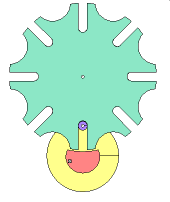|
Working Model is a powerful, engineering tool for statics, dynamics, mechatronics, biomechanics, design, vibrations,
and controls. A diverse set of drawing and mathematical tools enable students, educators, and engineers to
rapidly build complex models simulating the physical world. Never before has it been so
easy to set up an experiment and explore “what-if” scenarios. Working Model makes it
possible to visualize scientific and engineering concepts taught in the classroom, making course material more
relevant and enjoyable. Further enhancing the interactive student-teacher experience, Working
Model provides tools to design, test, refine, and verify mechanical, biomechanical, and
structural assemblies.
What instructors are saying about teaching with Working Model - more comments
“Working Model presents an excellent avenue to understanding rigid body dynamics through captivating
visualization.”
Professor David J. Purdy
Rose-Hulman Institute of Technology

Instructors choose Working Model because it makes them successful in the classroom and laboratory and gives
the students a powerful tool for their professional engineering careers. Working Model is easy and fun for students
to learn and use, and is unparalleled as a pedagogical tool for classroon visualization.
Click here to see how other educators are using Working Model in their classrooms.
School-to-work skills
Working Model is a powerful tool used by thousands of professional engineers worldwide. The skills learned by using
Working Model in school are directly applicable to on-the-job analysis of 2D motion simulations.
|


